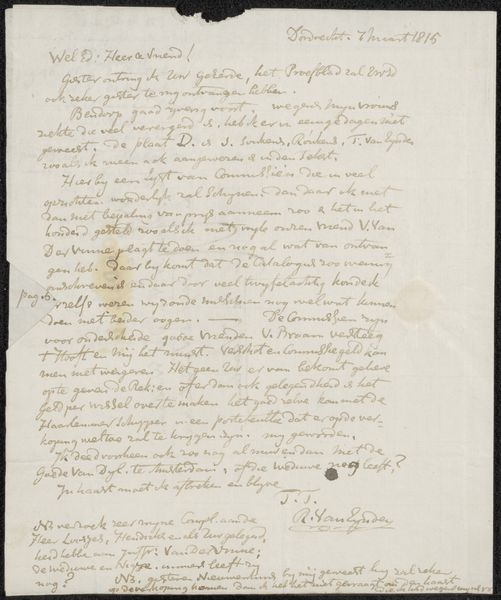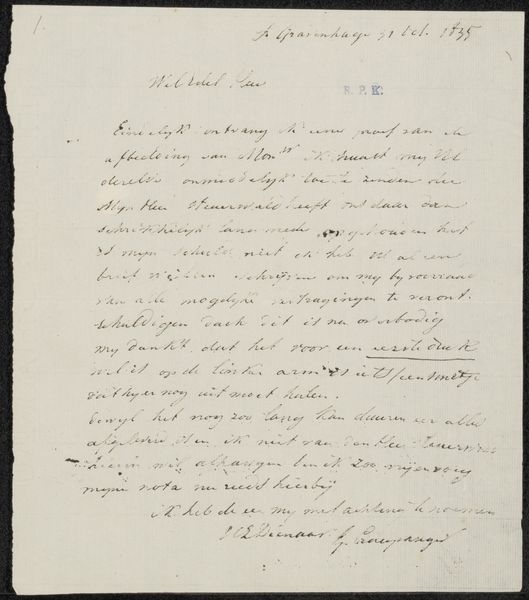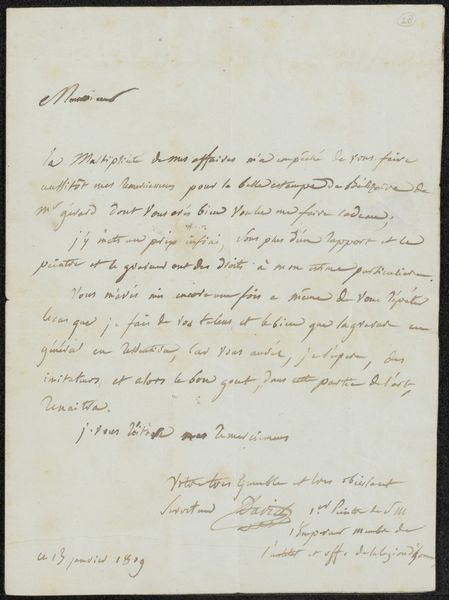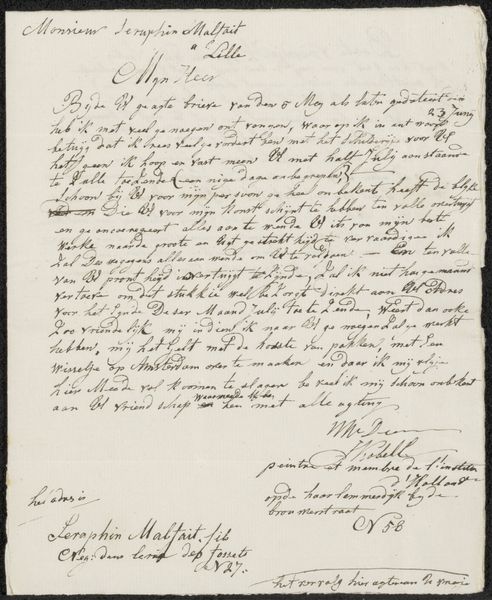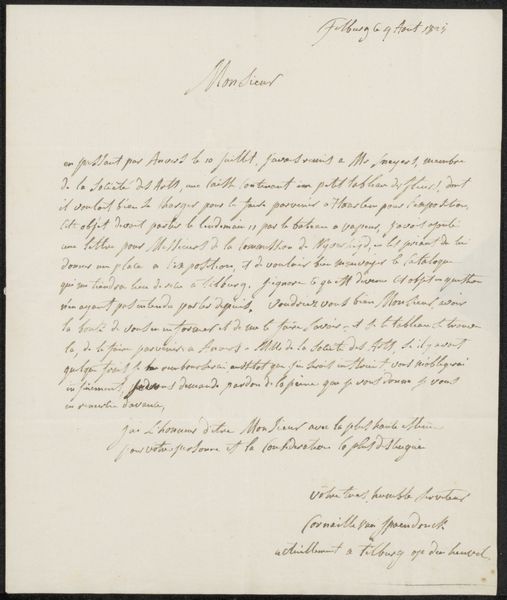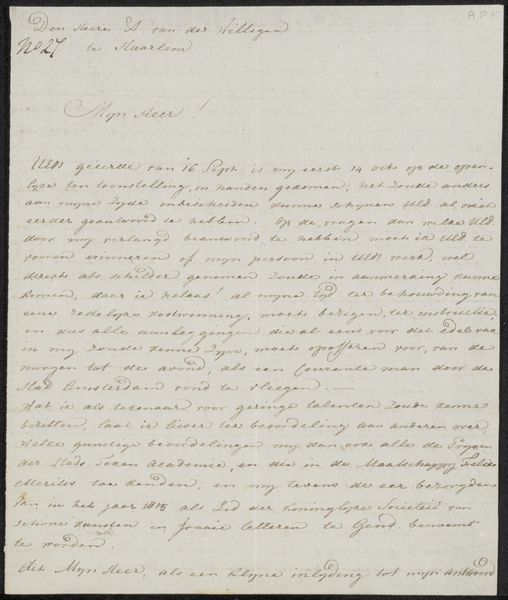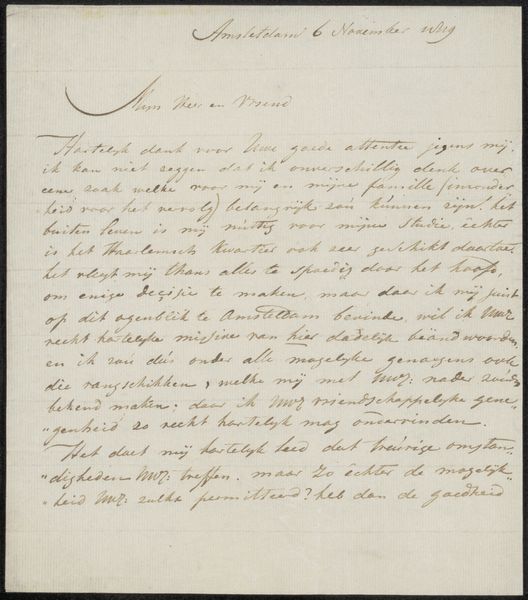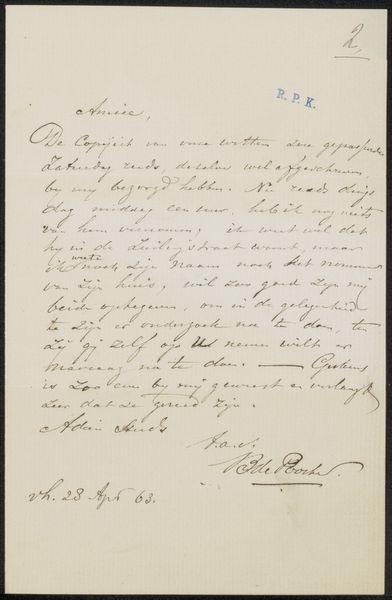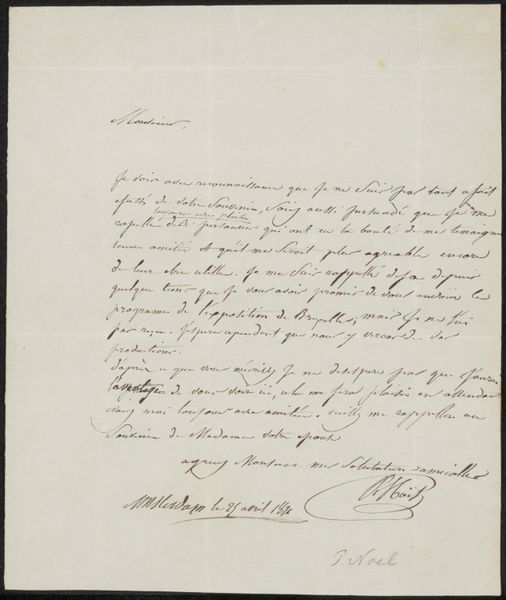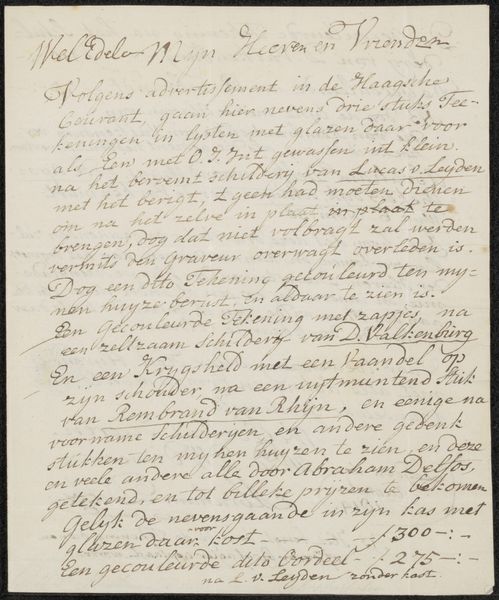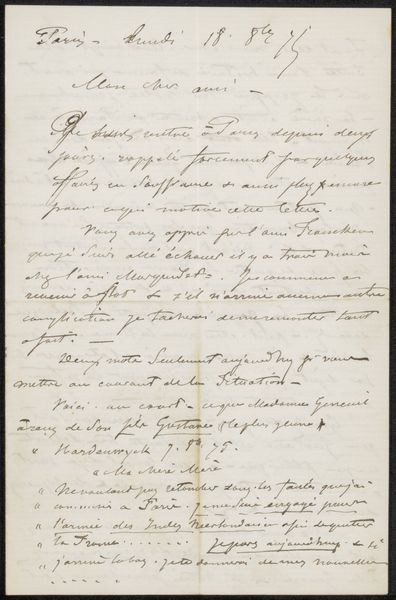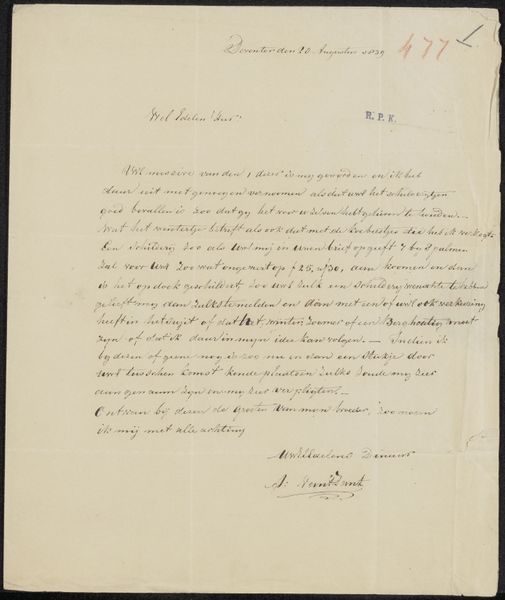
Copyright: Rijks Museum: Open Domain
Historian: We're looking at "Brief aan Johannes Immerzeel," a letter likely penned in 1823 by Pierre Jacques Goetghebuer, housed here at the Rijksmuseum. Artist: It's immediate in its intimacy. A personal communication made permanent by the museum’s careful keeping. There's a sense of urgency suggested by the hurried, looping script. Almost musical, I think. Do you feel that too? Historian: Yes, it possesses an undeniably intimate quality. Goetghebuer, writing to Johannes Immerzeel, a printer in Rotterdam, deals with matters of invoices, shipments, and settling accounts, which provides insight into the artistic business of the time. Artist: Invoices! I imagine the constant tension of that. As someone dedicated to creativity, I also see how the economic support shapes that artistic output, whether for liberation or as a vice, depending on who wields that kind of transactional power. Historian: Indeed, these exchanges highlight the economic framework that sustains artistic endeavors. But consider also the sociopolitical dimensions; this letter represents Goetghebuer negotiating within a system reliant on patronage, printing, and public distribution, essential considerations for artists' recognition at that time. Artist: Ah, right. The mechanics! I'm wrapped up thinking about Pierre Goetghebuer's emotional state as he's calculating and writing all of this. An artist is forced to live like a businessman, that makes him something of a mercenary for their vision, do you think? The art begins to lose some purity in translation that way. Historian: That's where it becomes the role of historical scholarship to consider the full array of documents like these that demonstrate the multi-faceted roles artists navigated; the practical realities, anxieties, and aspirations bound within. Artist: Looking closely, that cursive is just gorgeous. I could get lost tracing these strokes and imagine the writer in his little office, carefully drafting and sending it to Johannes Immerzeel, so concerned. We have an end product but never really have access to process that went on within this beautiful work. Historian: Precisely, these written exchanges provide context and invite contemplation on a time when such forms of communication shaped daily discourse, influencing the distribution and appreciation of art, as this example beautifully portrays.
Comments
No comments
Be the first to comment and join the conversation on the ultimate creative platform.
